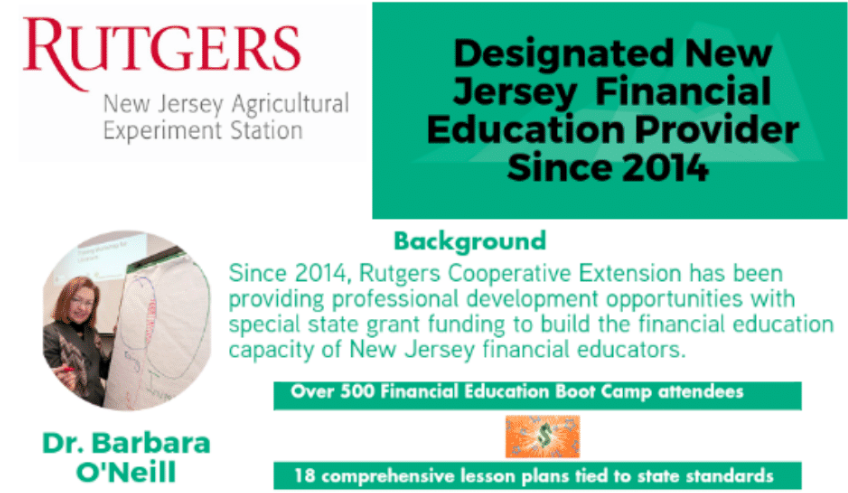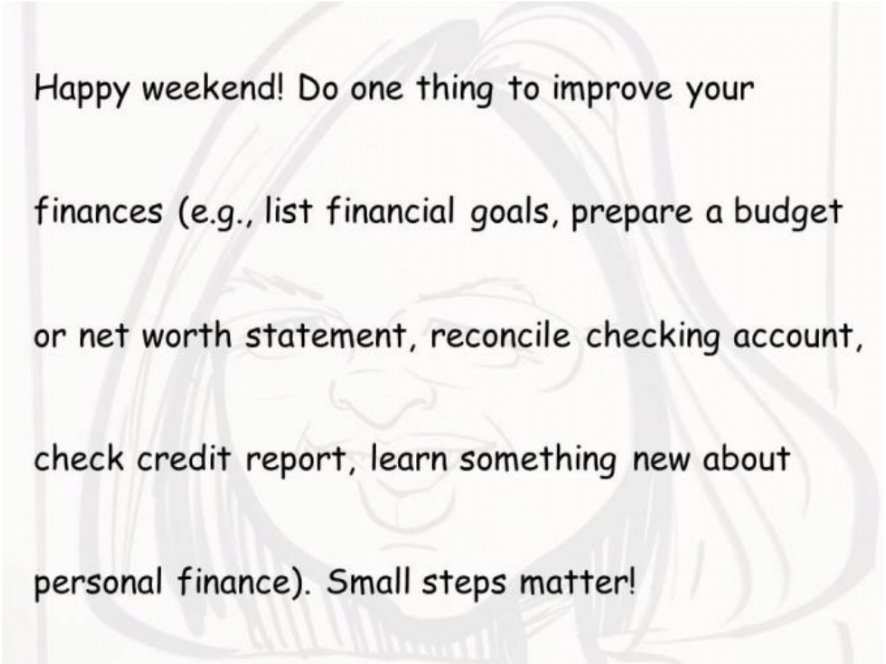 |
April 2019
|
April 2019 // Volume 57 // Number 2 // Tools of the Trade // v57-2tt7
Ten Tools for Creating Attention-Getting Social Media Messages
Abstract
It is not enough to simply post text in social media messages. Tweets with images garner three times more engagement, such as through likes, retweets, follows, clicks, and comments. Social media messages without accompanying visuals are a missed opportunity. This article describes 10 simple tools and accompanying techniques for creating attractive graphics and videos for use with social media: Canva, Paint, Piktochart, grayed out images, hand-drawn sketches, stock images, personal photos, PicCollage, GIFs, and Boomerang. Visuals should be copyright free and fit the content of a post. Time can be saved through repurposing existing images and videos for use in social media content.
This article describes how to create graphic images and videos to engage audiences via social media. It extends the work of Brinkman, Kinsey, and Henneman (2017), who described strategies for expanding the functionality of social media sites. Extension educators have been using social media for program marketing and outreach for over a decade. Facebook launched in 2004 and Twitter in 2006 (Shah, 2016). Several dozen articles about social media use in Extension work have been published in the Journal of Extension. For example, Gharis, Bardon, Evans, Hubbard, and Taylor (2014) described a three-step process for integrating social media into Extension work and urged Extension professionals to add it to their outreach tool set. Kinsey (2010) described characteristics and benefits of five social media tools, and Parsons (2015) described five others. Garcia, Dev, McGinnis, Thomas, and The Learning Child Team (2018) documented the impact of a purposeful approach to engaging users of social media and described a tool kit for best practices. Similarly, Christensen, Hill, and Horrocks (2015) urged a social media planning process and described their use of a social media marketing map.
Unlike a decade ago, it is not enough to simply post text in social media messages. According to social media management tool provider Hootsuite, "every Tweet that you send without an attached image is a missed opportunity" (LePage, 2015, p. 1). Tweets with images get three times more engagement, such as through likes, retweets, follows, clicks, and comments (Harvey, 2016). In addition, images slow viewers down and capture an extra few seconds of attention (LePage, 2015). Doyle and Briggeman (2014) analyzed social media engagement statistics, noted that posts with pictures received the highest average view per post, and recommended that Extension personnel focus on these types of posts. Similarly, Elmer, Harrison, and da Silva (2016), who studied social media use in nutrition education, urged the use of colorful pictures and videos for recipes and healthful eating tips. Allen, Jolly, and Barnes (2016) found that graphics increased online engagement in a program for teen parents.
Enhancing Social Media Messages with Images
Rather than miss opportunities, Extension professionals can create them by using various tools and associated techniques to enhance their social media messages through the addition of visuals. Ten easy-to-apply options are described here.
Canva. Canva (https://www.canva.com/) is a graphic design website that provides access to a wide variety of background colors, premade designs, font styles, graphics, and photographs. Photos can be uploaded at prices starting at $1 each, or users can upload their own images. Basic design functions are free of charge. Key Canva editing sidebar tools include "layouts," "background," "text," and "upload." Figure 1 shows a sample of an image designed through Canva.
Figure 1.
Canva Example

Paint. Located within Microsoft Windows Accessories, Paint (https://www.digitalunite.com/guides/microsoft-programs/what-microsoft-paint) is a useful tool for creating quick graphics for social media. The steps are as follows: First, capture a screenshot of online content (e.g., a page from an Extension website) or a PowerPoint slide using a design template or solid color background, minimal text, and graphics or photos. Open Paint, and paste the screenshot. Click "File," and then click "Save" and name the file. Crop if desired. Figure 2 shows a sample result of this execution. Another option is to simply save PowerPoint slides as JPEG images.
Figure 2.
Microsoft Paint Example

Piktochart. Piktochart (https://piktochart.com/) is most frequently used for creating infographics, which can teach key concepts or report Extension program results. Typically, infographics are too large to display attractively in social media messages. However, if the sections are designed as coordinated "stand-alone" segments, they can be cropped and digitized (e.g., using Paint) and used individually as social media graphics. Figure 3 shows an infographic developed through the use of Piktochart.
Figure 3.
Piktochart Example

Grayed out images. Grayed out images can be very effective when applied as the shadow of a photo or graphic in the background and covered by a small amount of text. The steps are as follows: First, open PowerPoint to the blank slide layout, and then right-click. Click "Format Background." Click "Picture Fill," and upload a photo or graphic. Adjust the transparency slider to around 70%–80%, and click "Apply to All" and then "Close." Insert a text box and type text over the grayed out image. Digitize the PowerPoint slide using Paint or the "File," "Save As," "JPEG File Interchange" commands in PowerPoint. Click "Current Slide" for one graphic or "Apply to All" if you are digitizing a series of grayed out PowerPoint slides. An example of a message over a grayed out image is shown in Figure 4.
Figure 4.
Grayed Out Image Example

Hand-drawn sketches. Books have been written featuring sketches on paper or napkins to illustrate key concepts. An example is The One-Page Financial Plan (Richards, 2015). Extension educators with artistic talent need only a Sharpie to make use of this tool. A completed sketch can be photographed, cropped, and enhanced with filters (if desired). It is then ready to be shared online.
Stock images. A source of quality copyright-free stock images is Pixabay (https://pixabay.com). Users can select from among almost 2 million Creative Commons photos and illustrations as well as vector graphics and film footage. Attribution is appreciated, but not required.
Personal photos. Sometimes there is no substitute for photos taken in real time at an Extension event. As with photos of program participants used in print media, a photo release should be obtained. Tips for taking quality smartphone photos include looking for light, adjusting exposure, turning on the grid, and editing your shots (Fisher, 2018).
PicCollage. A leading photo phone app, PicCollage (https://pic-collage.com/) enables users to make collages with cell phone photos. Images can be further enhanced with stickers, background patterns and textures, and templates. Some features require small payments.
GIFs. GIFs are files for moving images. GIFs used in social media are usually less than 10 s long and have been found to increase user engagement, such as through shares and retweets (LePage, 2015). A database of GIFs is available at https://giphy.com/categories. GIFS should be used sparingly and only when they really fit the content of a post (LePage, 2015).
Boomerang. Boomerang is a free Instagram app that allows users to create their own GIFs. It works by combining a series of 10 short, fast photo bursts into a mini video that plays forward and backward several times (Rousseau, 2016).
Conclusion
Effective social media use requires the ability to attract and engage users. This goal can be achieved through use of the tools and techniques for creating attractive graphics and videos described here. Adding visuals to social media posts need not be time-consuming. Repurposing existing images and videos and creating templates for images that will be used frequently promote efficiency. Opportunities to grab the attention of audiences through the use of social media can be seized, not missed.
References
Allen, K., Jolly, C., & Barnes, J. (2016). Using social media to engage and educate teen parents. Journal of Extension, 54(2), Article 2TOT3. Available at: https://joe.org/joe/2016april/tt3.php
Brinkman, P., Kinsey, J., & Henneman, A. (2017). Increasing the capacity of social media to extend your outreach. Journal of Extension, 55(1), Article 1TOT4. Available at: https://www.joe.org/joe/2017february/tt4.php
Christensen, A., Hill, P., & Horrocks, S. (2015). The social media marketing map (Part 1): A tool to empower the digital leaders of Extension. Journal of Extension, 53(4), Article 4TOT3. Available at: https://www.joe.org/joe/2015august/tt3.php
Doyle, M., & Briggeman, B. C. (2014). To like or not to like: Social media as a marketing tool. Journal of Extension, 52(3), Article 3IAW1. Available at: https://www.joe.org/joe/2014june/iw1.php
Elmer, S. R., Harrison, J. A., & da Silva, V. R. (2016). Social media as a supplement to face-to-face education: The perspectives of Expanded Food and Nutrition Education Program paraprofessionals and graduates. Journal of Extension, 54(3), Article 3FEA5. Available at: https://www.joe.org/joe/2016june/a5.php
Fisher, J. (2018). Tips and tricks for better smartphone photography. PC Magazine. Retrieved from https://www.pcmag.com/article2/0,2817,2417521,00.asp
Garcia, A. S., Dev, D., McGinnis, C. M., Thomas, T., & The Learning Child Team. (2018). Impact of an Extension social media tool kit on audience engagement. Journal of Extension, 56(2), Article 2RIB1. Available at: https://joe.org/joe/2018april/rb1.php
Gharis, L. W., Bardon, R. E., Evans, J. L., Hubbard, W. G., & Taylor, E. (2014). Expanding the reach of Extension through social media. Journal of Extension, 52(3), Article 3FEA3. Available at: https://www.joe.org/joe/2014june/a3.php
Harvey, G. (2016). How using images greatly improves your Twitter engagement. Retrieved from https://rethinkmedia.org/blog/how-using-images-greatly-improves-your-twitter-engagement
Kinsey, J. (2010). Five social media tools for the Extension toolbox. Journal of Extension, 48(5), Article 5TOT7. Available at: https://www.joe.org/joe/2010october/tt7.php
LePage, E. (2015). What 20,000 tweets taught us about Twitter images. Retrieved from https://blog.hootsuite.com/lessons-from-5-good-and-5-bad-twitter-images/
Parsons, M. (2015). Social media tools for the Extension toolbox. Journal of Extension, 53(2), Article 2TOT7. Available at: https://www.joe.org/joe/2015april/tt7.php
Richards, C. (2015). The one-page financial plan. New York, NY: Penguin Books.
Rousseau, C. (2016). What the heck is Boomerang? Retrieved from https://www.imore.com/what-heck-boomerang
Shah, S. (2016). The history of social networking. Retrieved from https://www.digitaltrends.com/features/the-history-of-social-networking/




